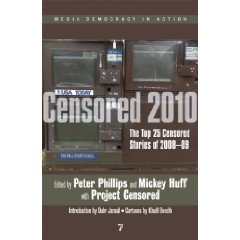I can’t believe Kermit was able to be this concise in so few words. Read it twice and make yourself a drink first (From the Argus Leader);
Business activity in Sioux Falls is down, the office building occupancy rate is at a record low, city sales tax revenue is down, unemployment is up, and more people out of necessity are visiting the Banquet and Food Pantry to obtain free food. In the midst of this economic downturn and suffering, city government probably will spend a record-breaking amount of money this year, and next year’s spending on the city’s operations budget will be 4 percent higher than this year.
Sioux Falls 2009 budget is a little over a half-billion
While Sioux Falls has a reputation for being a caring, compassionate community in which neighbors help each other during difficult times, unfortunately, the same cannot be said about the actions of city government.
Yes, it is a caring community. But something I learned a long time ago, two things have factored into this giving 1) Giving money instead of time 2) A tax write-off
During this time of economic recession, city government has placed additional financial burdens on citizens by increasing the sales tax, the property tax, water fees, sewer fees, platting fees, food inspection fees, signage fees, in addition to placing special tax assessments on numerous properties. Common sense dictates that when people are suffering from layoffs, firings and reduced wages, taxes and fees should not be raised but instead reduced or at least remain the same.
In turn, it forces retailers to raise their prices to keep up, which results in higher prices of goods, and higher retail taxes.
As a bare minimum the city should not raise property taxes next year. An Aug. 4 Argus Leader editorial agreed: “The 2010 budget offers a unique chance to hold the line on property tax increases.” Ignoring economic sense and the advice of the Argus Leader, two amendments to prohibit a city property tax increase were not even debated or voted on by the Sioux Falls City Council.
Which was very disappointing. Councilor Costello ‘pretends’ to be concerned about rising taxes and the recession, but when he has an opportunity to stop the silly increase, he is silent. Big surprise. Not.
On the other hand, time was devoted to debating the merits of spending $1,720,100 of taxpayer money on a new golf clubhouse and pond rehabilitation project at Prairie Green Golf Course. An amendment to delete the clubhouse project was overwhelmingly defeated by a vote of 7-1.
I agree with Kermit this is a silly expenditure for a city during a recession, but, the golf courses do make money for the city. But the way they spend those profits are flawed. The golf course should be able to have an endowment to build clubhouses without coming to the city.
Many people wonder why the City Council appears more concerned about spending for a golf clubhouse that would benefit the few, but it rejects any attempt to stop a property tax increase that would benefit most of the city’s population, including homeowners, business owners and renters (who pay the property tax in their rent). Simply, the answer is that the City Council is living in its own artificial world that consists of council members, the mayor, department heads and those individuals who have frequent contact with the city such as developers.
This one sentence alone explains our city government in a nutshell. I am not saying this because I know Kermit. I am saying this because I have seen, and still see the different levels of economic status in our community. A majority of our residents are lower middle-class or below. That’s the facts Jack. When the Gargoyle Leader cheerleads for more minorities and women on the council, they are missing the point, they need more working class, they are the ones not being represented, no matter what color or gender they are. They also need to give the middle finger to the developers and special interests. Government is set up to protect and serve the GENERAL PUBLIC not the RICH PUBLIC, that’s why we ALL pay taxes.
In this closed world, city officials embrace a progressive viewpoint that supports property tax increases each year and the building of expensive facilities such as the golf clubhouse at Prairie Green in order to enhance the city’s reputation for having quality facilities.
Not sure if Kermit was being sarcastic, but I don’t think blowing my taxes on stuff to benefit the Haves is ‘progressive’, as James Carville would say, it is ‘regressive’.
In the City Council’s artificial world, any references to real people being hurt by property tax increases are simply ignored.
They really live in another world, and I am not saying that to bring weight to Kermit’s statements. I watch the council meetings religiously, and I am shocked by the ‘Penthouse’ statements made by our councilors, even by the ones who don’t live in the Penthouse, but aspire.
This includes the real-life story of a widow living in Sioux Falls on a fixed income in a modest 1,000-plus square-foot house who worries that she might lose her home because she cannot afford the annual property tax increases. And there is the example of a single Sioux Falls mother working at three jobs to support her children while also trying to stay in their home despite property tax increases.
One story?! Shit, Kermit, I could tell you more then you want to hear.
In sharp contrast to the Sioux Falls City Council is Rapid City’s City Council staying in touch with the public by voting against a property tax increase. Furthermore, the mayor of Rapid City declared in the Sept. 22 Argus Leader: “We understand that times are tough and everyone needs to tighten the purse strings as much as possible, and I think the city government is no exception.”
I remember reading this and going, “Hank, please send that memo to Dave. PLEASE!!!!!!”
Now is the time for my fellow members on the Sioux Falls City Council to break out of their closed, artificial world and finally get in touch with the real people of Sioux Falls. Now is the time for Sioux Falls to follow the example of Rapid City and stop raising property taxes every year.
Kermit, I like you, and that advice is swell, but it will never happen. Maybe we should invite them to Borrowed Bucks to have a drink and discuss, hopefully the cops won’t have to show up to break up the fight, either way, they know the address.




